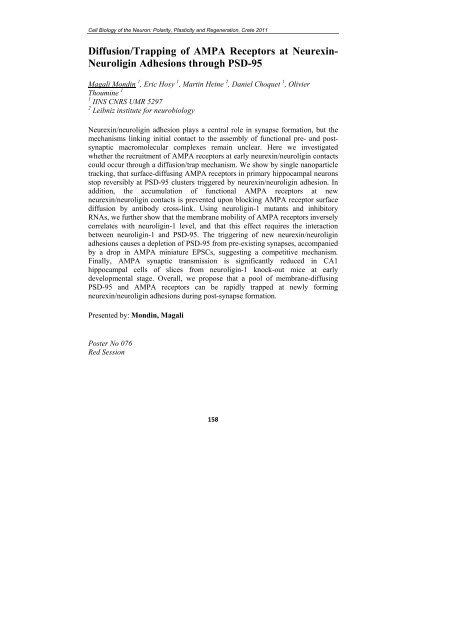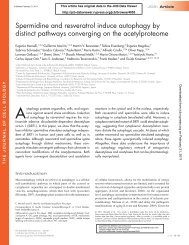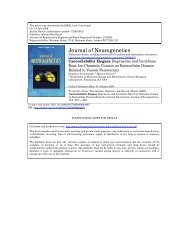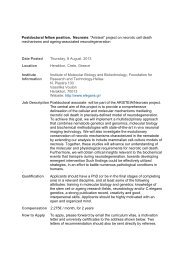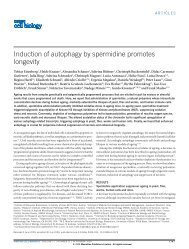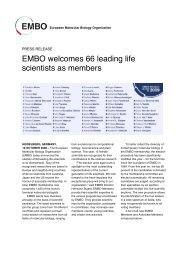CELL BIOLOGY OF THE NEURON Polarity ... - Tavernarakis Lab
CELL BIOLOGY OF THE NEURON Polarity ... - Tavernarakis Lab
CELL BIOLOGY OF THE NEURON Polarity ... - Tavernarakis Lab
You also want an ePaper? Increase the reach of your titles
YUMPU automatically turns print PDFs into web optimized ePapers that Google loves.
Cell Biology of the Neuron: <strong>Polarity</strong>, Plasticity and Regeneration, Crete 2011<br />
Diffusion/Trapping of AMPA Receptors at Neurexin-<br />
Neuroligin Adhesions through PSD-95<br />
Magali Mondin 1 , Eric Hosy 1 , Martin Heine 2 , Daniel Choquet 1 , Olivier<br />
Thoumine 1<br />
1 IINS CNRS UMR 5297<br />
2 Leibniz institute for neurobiology<br />
Neurexin/neuroligin adhesion plays a central role in synapse formation, but the<br />
mechanisms linking initial contact to the assembly of functional pre- and postsynaptic<br />
macromolecular complexes remain unclear. Here we investigated<br />
whether the recruitment of AMPA receptors at early neurexin/neuroligin contacts<br />
could occur through a diffusion/trap mechanism. We show by single nanoparticle<br />
tracking, that surface-diffusing AMPA receptors in primary hippocampal neurons<br />
stop reversibly at PSD-95 clusters triggered by neurexin/neuroligin adhesion. In<br />
addition, the accumulation of functional AMPA receptors at new<br />
neurexin/neuroligin contacts is prevented upon blocking AMPA receptor surface<br />
diffusion by antibody cross-link. Using neuroligin-1 mutants and inhibitory<br />
RNAs, we further show that the membrane mobility of AMPA receptors inversely<br />
correlates with neuroligin-1 level, and that this effect requires the interaction<br />
between neuroligin-1 and PSD-95. The triggering of new neurexin/neuroligin<br />
adhesions causes a depletion of PSD-95 from pre-existing synapses, accompanied<br />
by a drop in AMPA miniature EPSCs, suggesting a competitive mechanism.<br />
Finally, AMPA synaptic transmission is significantly reduced in CA1<br />
hippocampal cells of slices from neuroligin-1 knock-out mice at early<br />
developmental stage. Overall, we propose that a pool of membrane-diffusing<br />
PSD-95 and AMPA receptors can be rapidly trapped at newly forming<br />
neurexin/neuroligin adhesions during post-synapse formation.<br />
Presented by: Mondin, Magali<br />
Poster No 076<br />
Red Session<br />
158


